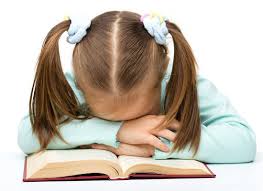What to Expect from Your Child’s Sleep Study
We utilize the same tests used to diagnose and rule out sleep disorders in adults for children. However, because children are more likely to displace sensors during the night, we prefer to use attended studies rather than home monitoring.
We recommend that a parent accompanies a child who spends the night at the Sleep Clinic. The parent sleeps in the same room to make the child more comfortable.
What should parents or caregivers expect when having their child’s sleep studied?
- A technologist will greet you and your child at approximately 7:30 p.m. in the waiting area of the lab.
- There will be additional paperwork to complete.
- We will apply electrodes and sensors with opportunity for frequent breaks. Your child may watch television or a favorite DVD brought from home.
- We expect the parents or caregivers to be active participants during the child’s hook-up procedure and remain with the child (under age 18) for the duration of the sleep study. Accommodations are provided.
- We will attempt to adhere to your child’s usual bedtime, if possible.
- Your child will be in a monitored environment during the testing procedure; under the care of skilled technologists.
- Typically, we begin waking patients at 6 a.m. Please keep in mind that the equipment takes approximately 20 minutes to remove.
- We will provide instruction on CPAP and Bilevel usage, if prescribed.
What should I bring for the child’s stay in the sleep clinic?
- You will be requested to have your child dress in his/her pajamas (two-piece without feet). Nightgowns and one-piece pajamas sets are not acceptable attire. If you have questions regarding proper sleep wear, please check-in with the lab staff prior to the child’s visit.
- You may bring the child’s books, toys, a favorite stuffed animal, special pillow and/or blanket, white noise device, and favorite DVD movies (there is a DVD player in each room), if desired.
- You should bring something for the child to read or to work on during non-sleep periods.
- You should bring your child’s medications or special food needed during his/her stay in the clinic, such as milk bottles. The lab does not provide any of these items.
- You must bring your child’s personal toiletries (diapers, toothpaste, toothbrush, comb, brush, etc.), and a change of clothes for the next day. The lab provides towels and bedding and a shower is available.
- Please leave all valuables at home
- Limited family members/friends (1-2) are welcome to accompany you until the child’s bedtime.
- One parent or caregiver must accompany all minors and must stay overnight with the patient. The technologist team will expect the assistance of a parent/guardian during the night, thus it is critical for the adult to be in the room with the child.
- Accomidations are available in each room for one adult attending to the child during the night.
- Please do not bring animals, unless medically authorized.
- Please bring a list of medications your child is currently taking.
- If your child uses a CPAP/Bilevel machine, please do not bring the child’s machine or accessories unless requested by a sleep physician.
What is a polysomnogram?
A sleep study or polysomnogram is a test that measures body functions during sleep. Performing a sleep study on a child is exactly the same as conducting a study on an adult. During the night of study, the child will sleep at our lab and be monitored by sleep technologists.
Each test will vary depending on the individual case, but some measurements taken may include:
- Brain waves (EEG) – (surface electrodes on the child’s scalp)
- Eye movements (EOG) – (surface electrodes next to the child’s eyes)
- Muscle movements (EMG) – (surface electrodes on and under the child’s chin)
- Limb movements (EMG) – (surface electrodes on the child’s lower legs)
- Heart rate (ECG) – (surface electrodes on the child’s chest)
- Breathing (Nasal/Oral) – (sensors placed onto the skin near the child’s nose and mouth)
- Breathing (Respiratory) – (small, elastic bands placed around the child’s chest and abdomen or surface electrodes placed on the child’s ribcage).
- Blood Oxygen Levels (SpO2) – (small probe attached to the child’s finger, and not taken from actual blood samples removed from the child’s veins)
- Video Recording – (the child’s body movements will be recorded)
Other body functions may be recorded to answer special questions: CO2, seizures, and movement activity.
In some cases, testing may occur during the daytime hours in place of or in addition to an overnight study as ordered by the child’s sleep physician.
Sensor attachment will be done utilizing collodion (a glue-like substance) which can be removed. Please prepare for this process by thoroughly washing the child’s hair before the child’s visit to our lab. In some cases, a paste adhesive will be used to attach the electrodes and the child’s head will be wrapped with a bandage material to keep them in place. Other electrodes and devices are attached with hypo-allergenic tape.
Why record all of these things?
Disrupted sleep can disturb daytime activities, and some medical problems which occur during sleep involve a risk to basic health. These parameters are recorded to obtain objective information about the quality of sleep to better define the child’s sleep problem.
How can the child sleep with all of these things on them?
Most children sleep well in the lab. They may be apprehensive about the hook-up, depending on their age, but our experienced technologists will work to reassure them. The body sensors are applied in a manner that will allow the child to turn and move during sleep. The technologist team communicates with everybody involved: parents, caregivers, and the child to make the testing environment comfortable and so that the procedures go smoothly. Having a parent with the child during the sleep test and overnight stay makes them feel comfortable. All children must be in the company of a parent, caregiver or family member during their stay at the lab.
Will the sensor devices cause discomfort?
No! Sometimes, in preparing the sites for sensor application there are mild temporary irritations; please inform us if the child has any known sensitivity to particular tapes or if he or she has a latex allergy. Some children experience temporary discomfort associated with the Pes (esophageal pressure manometry) procedure. However, this does not generally cause any significant discomfort.
What should I expect regarding meal service?
The lab is an outpatient facility. Meal service is not provided, except for patients scheduled for daytime nap testing (MSLT or MWT). Please have the child eat dinner prior to arrival at 7 P.M.! Please bring snacks and drinks your child likes, if so desired; refreshments are also available.
What are some of the things I should keep in mind during my visit at the sleep clinic?
The lab opens at 7 p.m. for overnight studies. It is important that your child arrive on time! If you need to cancel the child’s overnight sleep appointment, please call before 24 hours before if possible. If you are running late after our office closes, please call the lab technical at the same number and leave a message. The main entry is secured at 7 p.m.; lab personnel will let you into the building when you arrive.
No smoking is allowed on the premises.
What happens to the recorded data?
The recording of the child’s sleep test will be analyzed in detail by a technologist and interpreted by Alaska Sleep Clinic’s Pediatric Medical Director, Dr. Harry Yuan. The sleep study results will be forwarded to you and the physician who referred the child to the lab. Once you have received the child’s results, please contact Alaska Sleep Clnic to schedule a follow-up appointment where the results of the child’s sleep study and treatment plan will be discussed in detail with the child’s sleep physician.

Alaska Sleep Clinic Pediatric Medical Director













